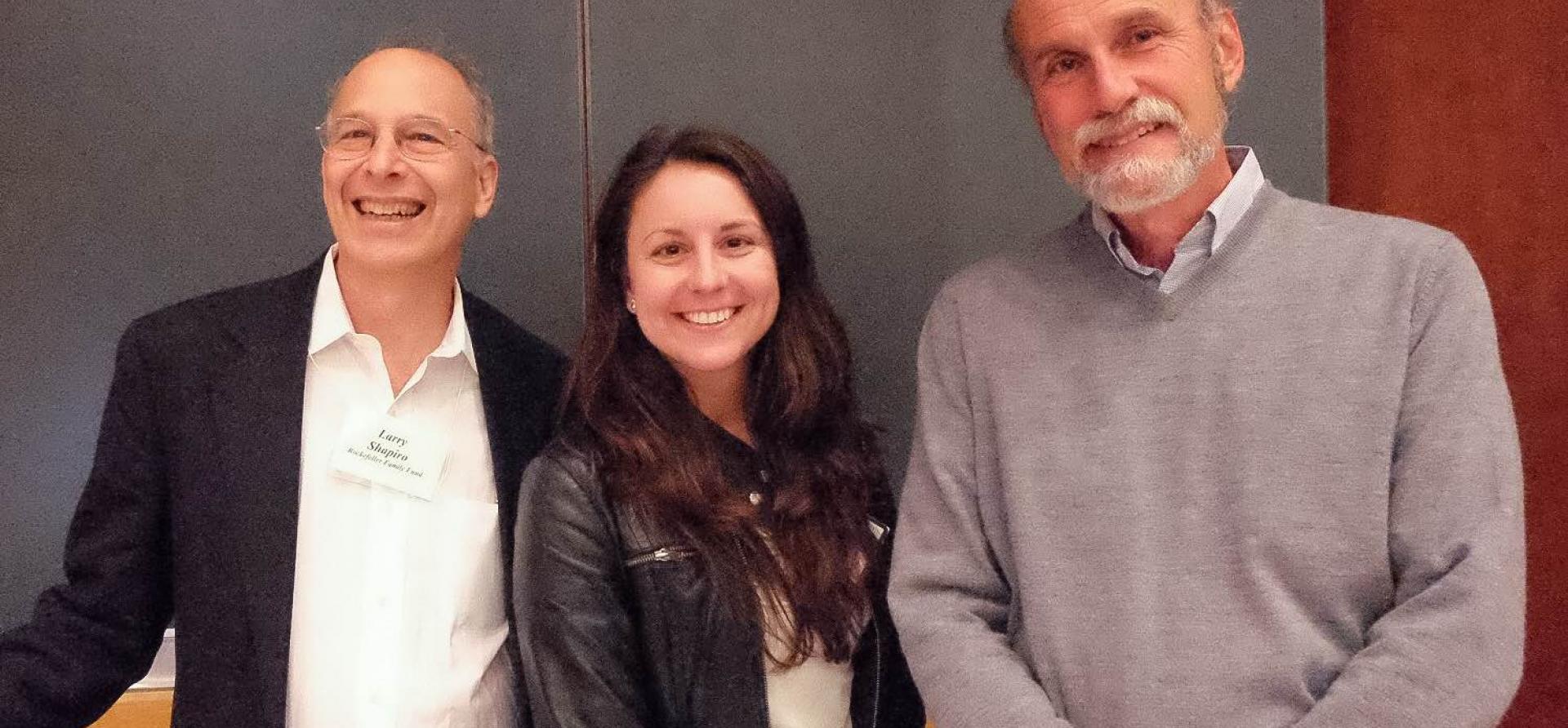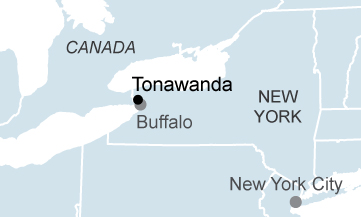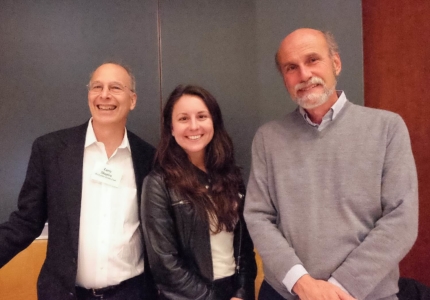How to Invest in Struggling Coal-Industry Communities? Let Us Count the Ways

 Tonawanda, N.Y., is no stranger to bad news.
Tonawanda, N.Y., is no stranger to bad news.
The town, indeed the entire region that encompasses western New York and the Buffalo area, has become a poster child for lost manufacturing jobs, fiscal distress and environmental problems. Efforts at redevelopment have been hobbled so badly by false starts and unfulfilled promises that people could easily have given up by now. Yet they haven’t, and their persistence and insistence on moving forward is paying off, as seen recently in the town’s response to the closing of a power plant that has been a significant part of its economy for years.
The plant in question, NRG’s Huntley Generating Station, closed this month, taking crucial jobs and public revenues with it. But residents were prepared, having succeeded in getting state lawmakers and Governor Andrew Cuomo to enact a law providing economic transition funds to Tonawanda (the state is investing, too, in nearby Dunkirk, which faces a similar challenge).
The legislation provides several million dollars per year over the next few years to help offset revenue losses to the school district and to local governments affected by the closings. And while it’s not nearly enough money to solve the fiscal problems, this is still a success story for the remarkable local partnerships that were forged by hard times.

Members of a coalition that helped bring state support to the post-coal economy in Tonawanda, N.Y., left to right: Larry Shapiro of the Rockefeller Family Fund, Rebecca Newberry of the Clean Air Coalition of Western New York, and Richard Lipsitz of the Western New York Area Labor Federation.
Groups as diverse as the Western New York Labor Area Federation, the Clean Air Coalition, the Kenmore Teachers Associations and others found enough common ground in their response to elicit state support. The folks who pushed for that constructive approach were hardened veterans of past plant closings, public budget cuts and population flight, and they made a choice: rather than standing around and complaining about yet another economic setback they could organize the community to promote a constructive vision of the future.
While the state support is admittedly temporary, it is crucial nonetheless, helping fund project plans for the old plant sites and providing jobs. It speaks volumes about what can be done for families, businesses and communities hurt by coal mine and coal plant closings, and it’s a model that can be followed nationally.
WE ADVOCATE SPECIFICALLY FOR THE ADOPTION AT THE FEDERAL LEVEL OF A VARIATION ON THE DEPARTMENT OF DEFENSE’S OFFICE OF ECONOMIC ADJUSTMENT PROGRAMS. With its roots in the Kennedy years and with the full support of every president since, the OEA has helped communities economically damaged by defense-industry cutbacks. The office has a variety of initiatives that help ease community transitions when a base closes, for instance, or when a local defense contractor scales back.
This federal model offers important takeaways for communities affected by closings across the coal industry—in both coal-fired generation and coal mining.
- First, the need for basic economic assistance in the form of support for businesses directly affected by closings. We only need to look at the lists of creditors in the dozens of coal mining bankruptcy proceedings to understand the ripple effect of a mine failure. Economic-transition assistance and planning can be developed on a community-by-community basis to support businesses much like the OEA manages such distress—and similar to how school and local governments have responded in Tonawanda.
- Second, the need for a strategic set of fiscal offsets related to specific budgetary pressures created at the local and state level. Every state and local government has a particular mix of revenues generated by the workings of the local economy. The impact of the loss of a plant or a mine varies community by community. Payments from the federal government combined with state support where appropriate can make seemingly insurmountable local budgetary losses far more manageable. Transitional payments buy time, and time is as scarce as money to those in charge of public budgets.
- Third, the need for a full set of resources to address economic security. Such resources can be best arrayed by assessments informed with the cooperation of local leaders and departing companies. Income supports beyond unemployment benefits are essential. Full consideration should be given to lost wages, health benefits and pensions. Job-training is important, although job-training programs have historically had a mixed level of success and need to be carefully monitored. The Obama administration is off to a promising if modest start to coal-community transition with its Power+ Plan. More must be done.
- Fourth, the need for local and state economic planning. Business leaders, mayors and governors must find ways to simultaneously support what’s left of the coal industry and to help build new investment in their whole economies. Key to most economic recovery will be investments in smaller businesses with local entrepreneurs—the most successful of these sell goods and services locally but with an eye toward exporting their products to other communities, regions and countries. The transition away from coal is also the transition toward alternatives to fossil fuels, and that means local jobs in solar energy, wind energy, and energy efficiency. Whole new energy markets can be created in most places in the U.S., and a large, existing infrastructure of rural cooperatives and municipal electric systems already have the organizational to drive such development. Broader, large-scale economic development initiatives with big corporations, educational institutions, medical establishments all need to be on the table.
- Fifth, each and every community needs a plan for the direction its own development. What the folks in Tonawanda know is that they needed a blueprint to help them find a way forward and to do it together. What they may not have known—but have since learned—is that the most effective federal economic-development responses come about as a result of America’s local communities and state governments insisting on them. Whether it was Social Security, housing or health policy, federal support in each realm has always come from local impetus. The local and regional transition in coal communities will be no different.
And every plan needs a strategy that makes the next business cycle a far better steward of the environment than the existing one.
SUCH AN UNDERTAKING SEEMS ENORMOUS—SO ENORMOUS, IN FACT THAT SOME ASK WHY DO IT. The answer lies in the fact that the coal industry has made a huge contribution to U.S. economic development. Coal has been the main fuel for the nation’s electricity system for almost 40 years, and the coal industry has made gigantic contributions to steel-making. Its employees have historically performed thankless, dangerous work to ensure America’s economic success.
Today, coal miners are losing a sure, multi-generational source of income, and their family stability as a result is at risk.
Studs Terkel, the great oral-history chronicler of working life in America, once interviewed a construction worker who told him he wished that buildings had “I helped build this” plaques with the names of those who had worked on them. Such homage would have allowed the children of those workers—and their children’s children—to better honor the legacy of those who had come before them.
We cannot etch the names of mineworkers on the walls of empty mines. What we can do is invest in the many coal-industry families who have given so much. Their children, and their children’s children, scattered though they may be, deserve the same “I helped build this” acknowledgement that that construction worker sought.
Tom Sanzillo is IEEFA’s director of finance.
Related posts:
A Choice in Upstate New York as NRG Closes Its Huntley Power Plant: Communities Can Create New Beginnings by Pulling Together
In Western New York, an Instructive Tale of Two Coal-Fired Plants: One Community Clings to the Past; the Other Explores How to Survive in a New-Energy Economy















